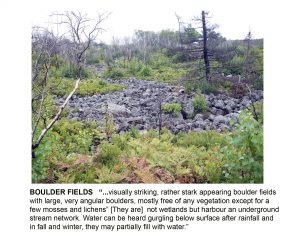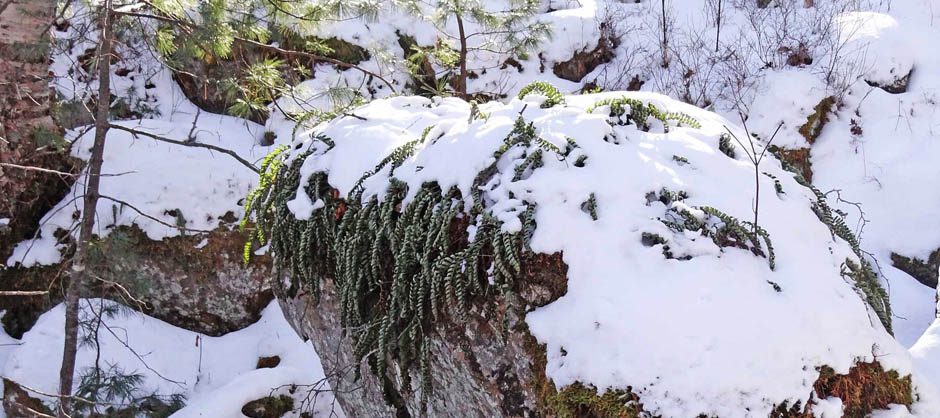 In a recent Nature Nova Scotia/Ecology Action Centre hosted webinar on “Wetlands, Adaptation and Extreme Weather Events”, Danica Van Proosdij talked about her work on making room for coastal wetlands (saltmarshes) to adapt to climate change, and David Patriquin talked about the significance of wetlands in the Backlands.
In a recent Nature Nova Scotia/Ecology Action Centre hosted webinar on “Wetlands, Adaptation and Extreme Weather Events”, Danica Van Proosdij talked about her work on making room for coastal wetlands (saltmarshes) to adapt to climate change, and David Patriquin talked about the significance of wetlands in the Backlands.
David’s presentation and slides on “Watersheds, Watercourses and Wetlands of the Halifax Backlands” are available on this website under Current Issues/Wetland Webinar.
| SUMMARY As documented by N. Hill, the water regime in the Halifax Backlands has features of dryland systems, with intermittent stream courses probably accounting for a majority of the water flow.
Highlighted in this presentation are Mountain Holly Washes, Boulder Fields, Vernal Pools, and Whaleback Troughs. They are critical components of watercourses but some (Mountain Holly Washes, Boulder Fields – documented by N. Hill – & Whaleback Troughs – documented by D. Patriquin) are not well protected by Nova Scotia’s watercourse or wetland regulations because any surface water is seasonal and/or they are too small (<100m2) or they do not qualify as wetlands; or as wetlands (Vernal Pools – documentation by N. Hill & P. Manual & students) they are simply overlooked even if>100m2 area because wetland protection tends to be focussed on defining the boundaries of an individual wetland, rather than on its role as a component of a watercourse. Larger wetlands (swamps & fens) interrupted the spread of the massive 2009 Spryfield fire; smaller wetlands burned over but recovered within 2-3 years. During recent torrential mid-summer rains, a lot of water was stored in fens and swamps and there was no noticeable disruption/erosion of the downstream watercourses lying within mostly forested landscapes. Significant stands of invasive Multiflora Rose, Japanese Knotweed and Privets were observed along Lawsons Brook at the perimeter of the Backlands in July 2023 and may be displacing Canada Holly; on the banks/more elevated areas Japanese Knotweed is a significant invasive. However, there were no exotic or invasive species along a major watercourse/single-track trail in the Shaw Wilderness Park. Significant salinization is occurring in watercourses with headwaters in developed areas. In the discussion, it was contended that we really can’t develop within the Backlands and maintain their ecological qualities because of the relatively small area remaining (circa 1350 ha) and because we simply can’t substitute for the roles of the smaller but cumulatively significant small wetlands and watercourses. |
